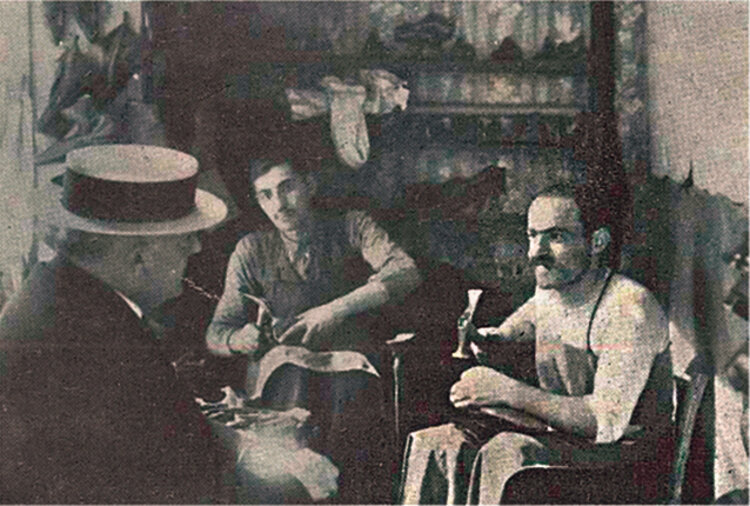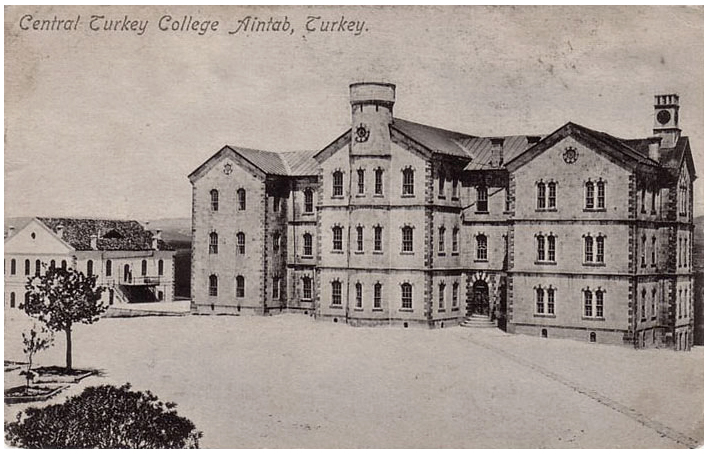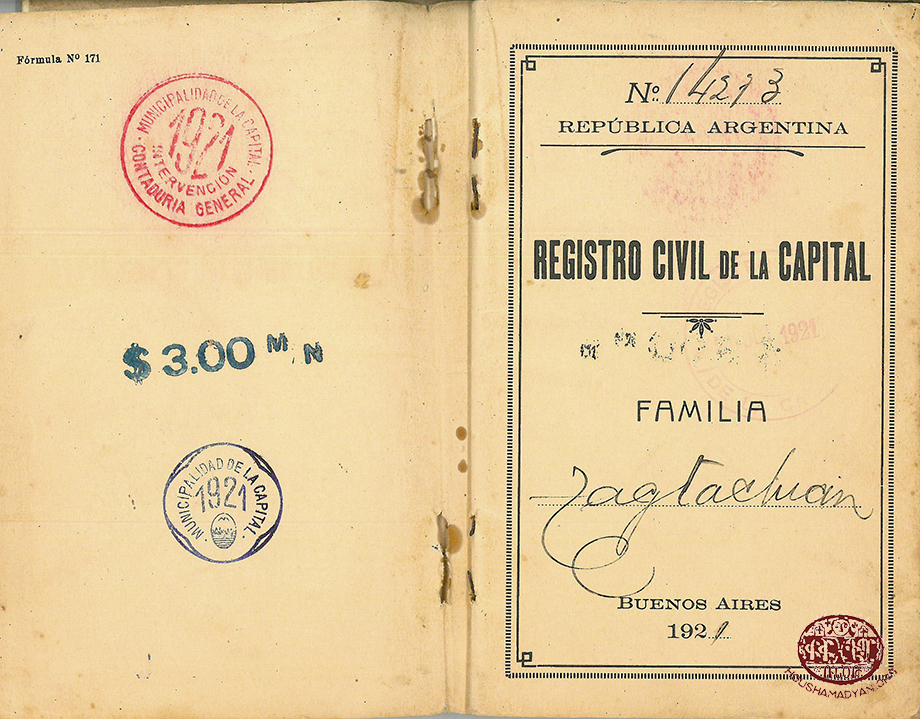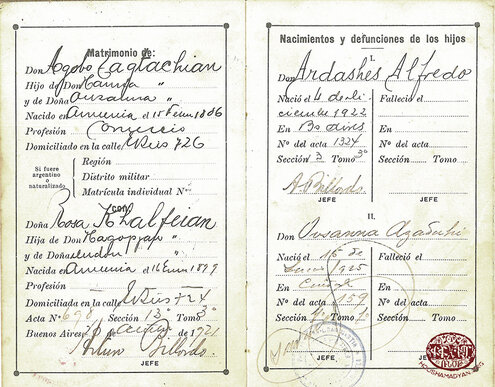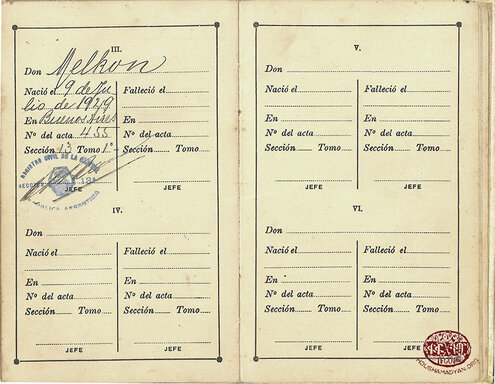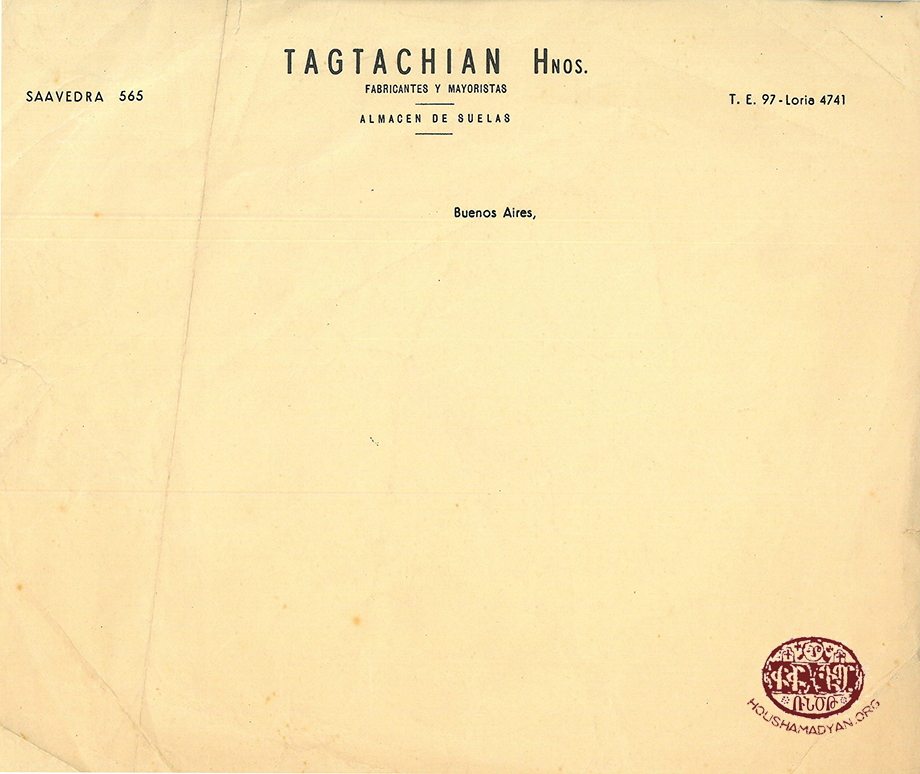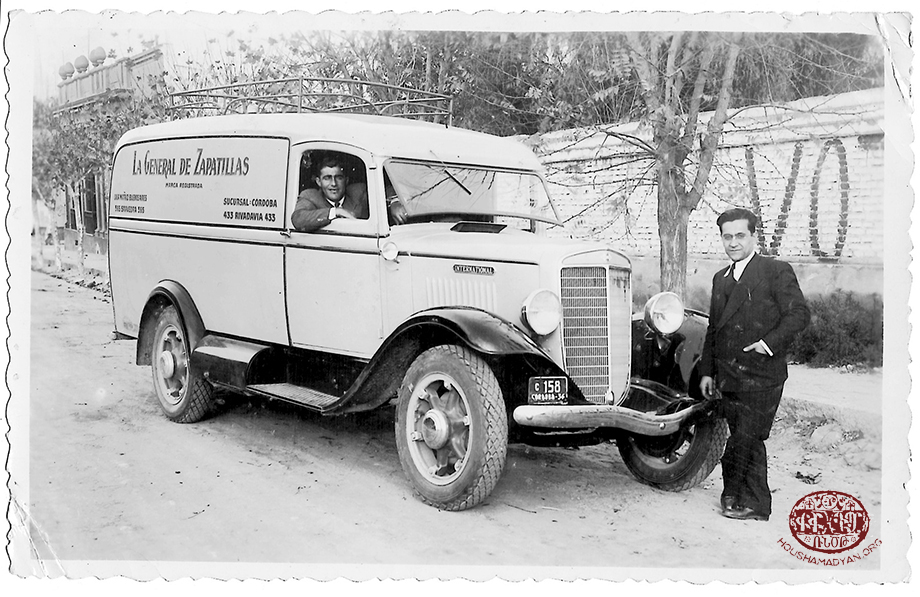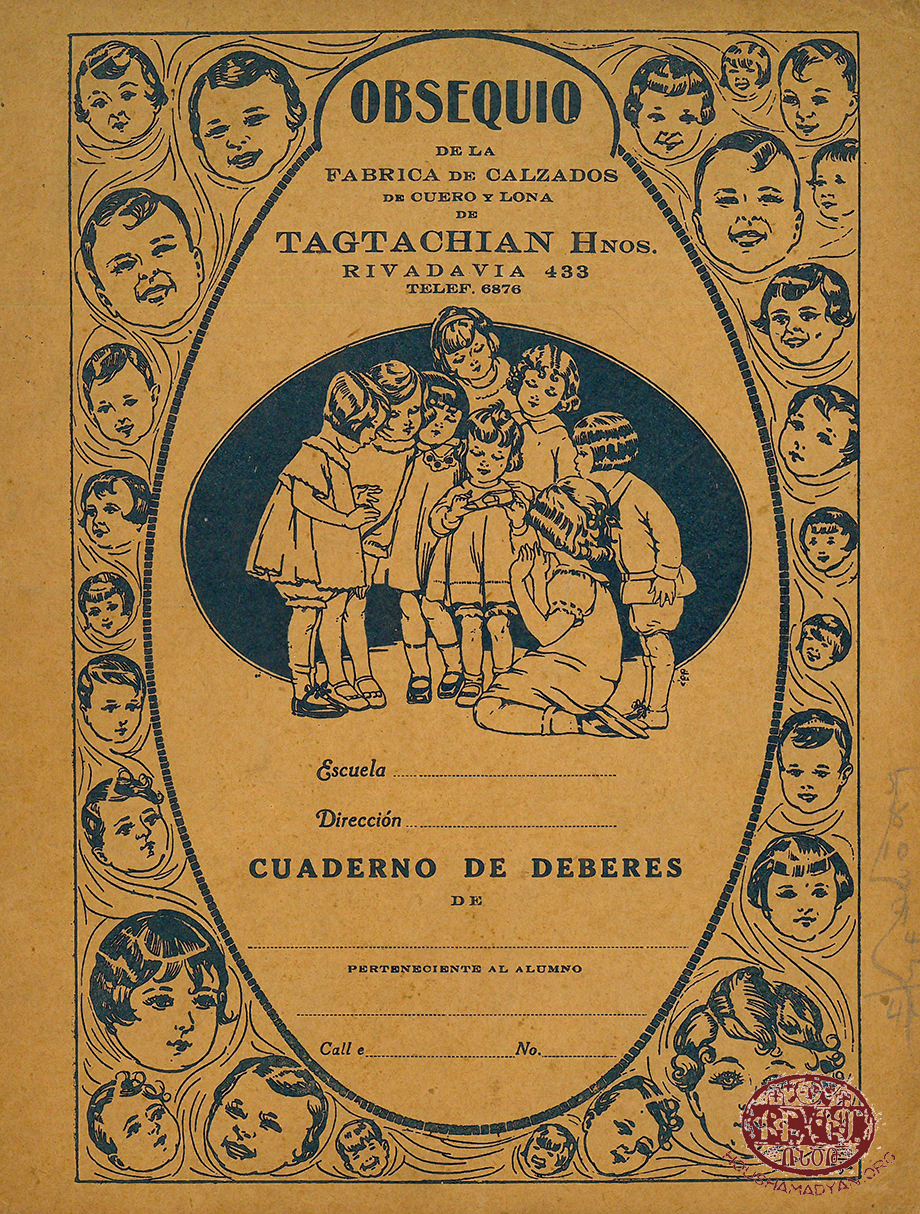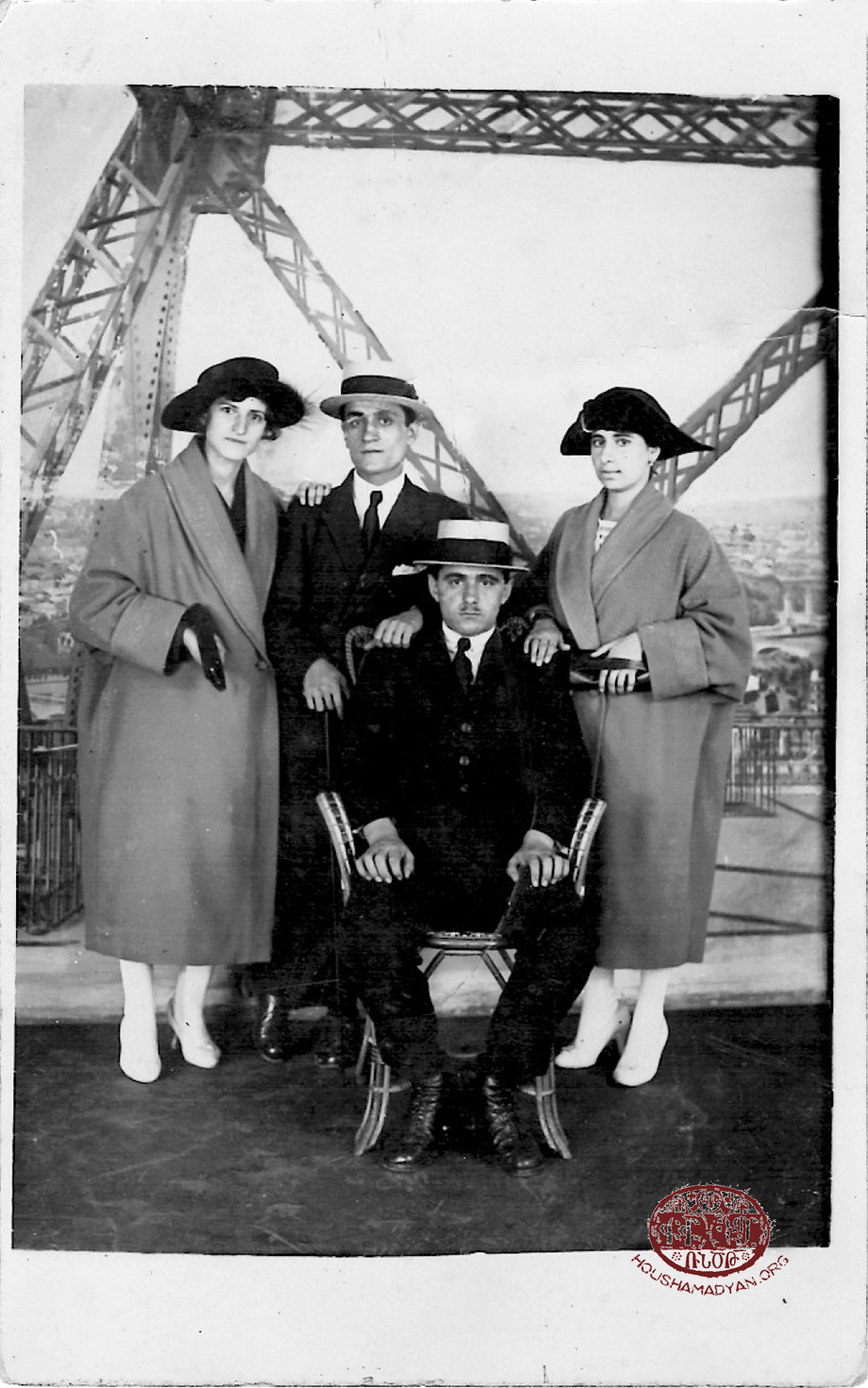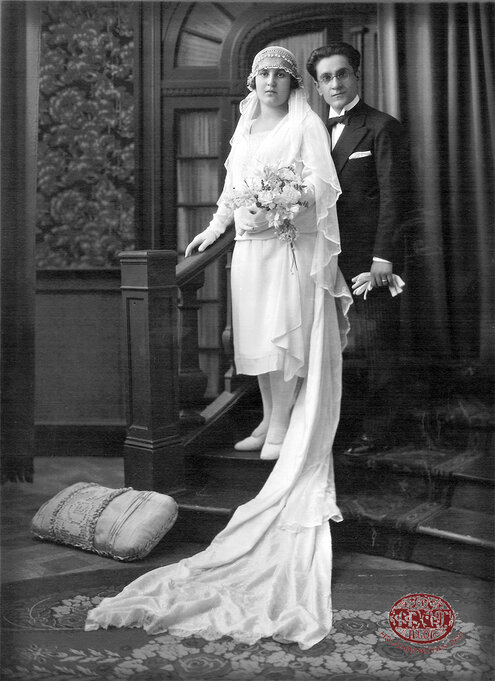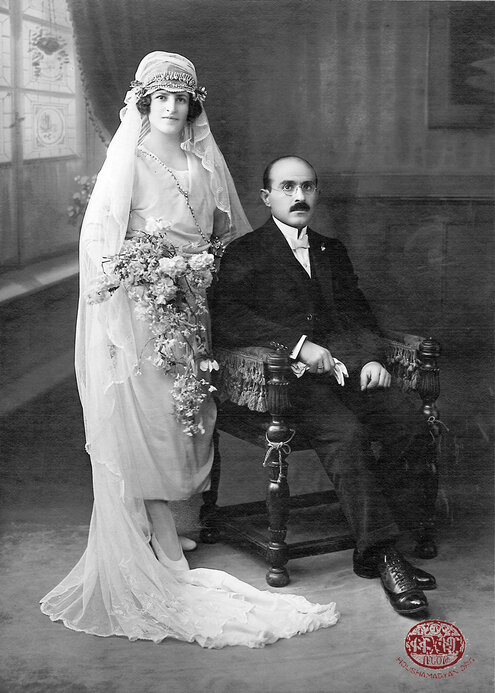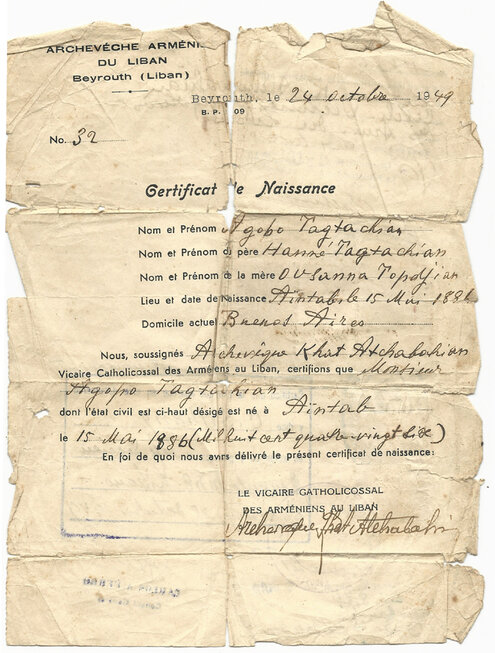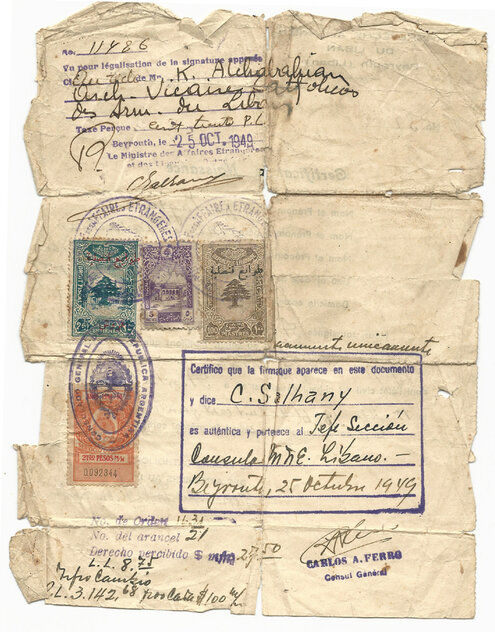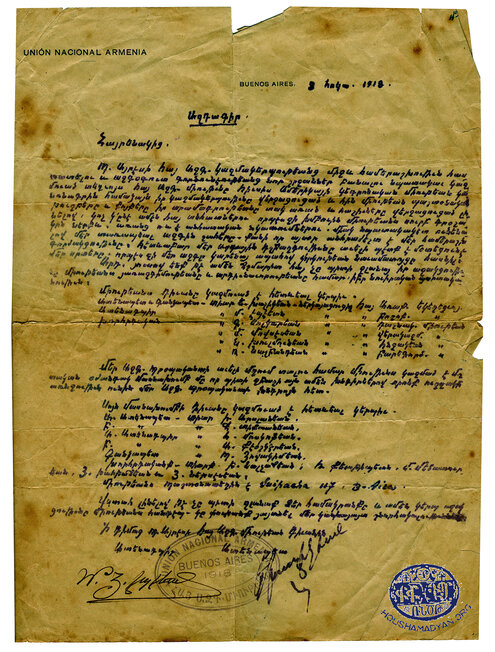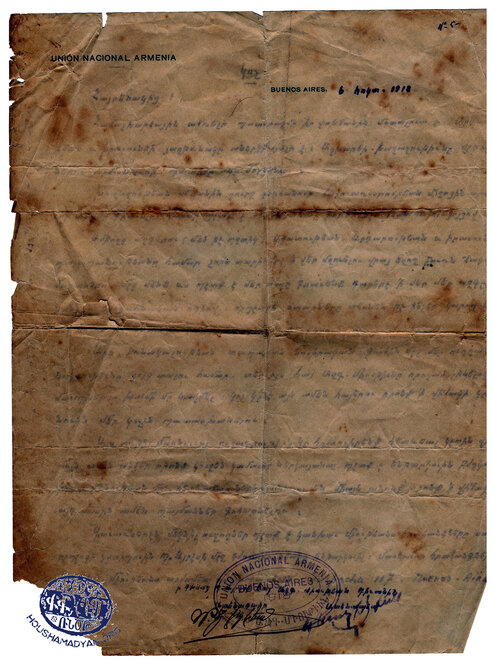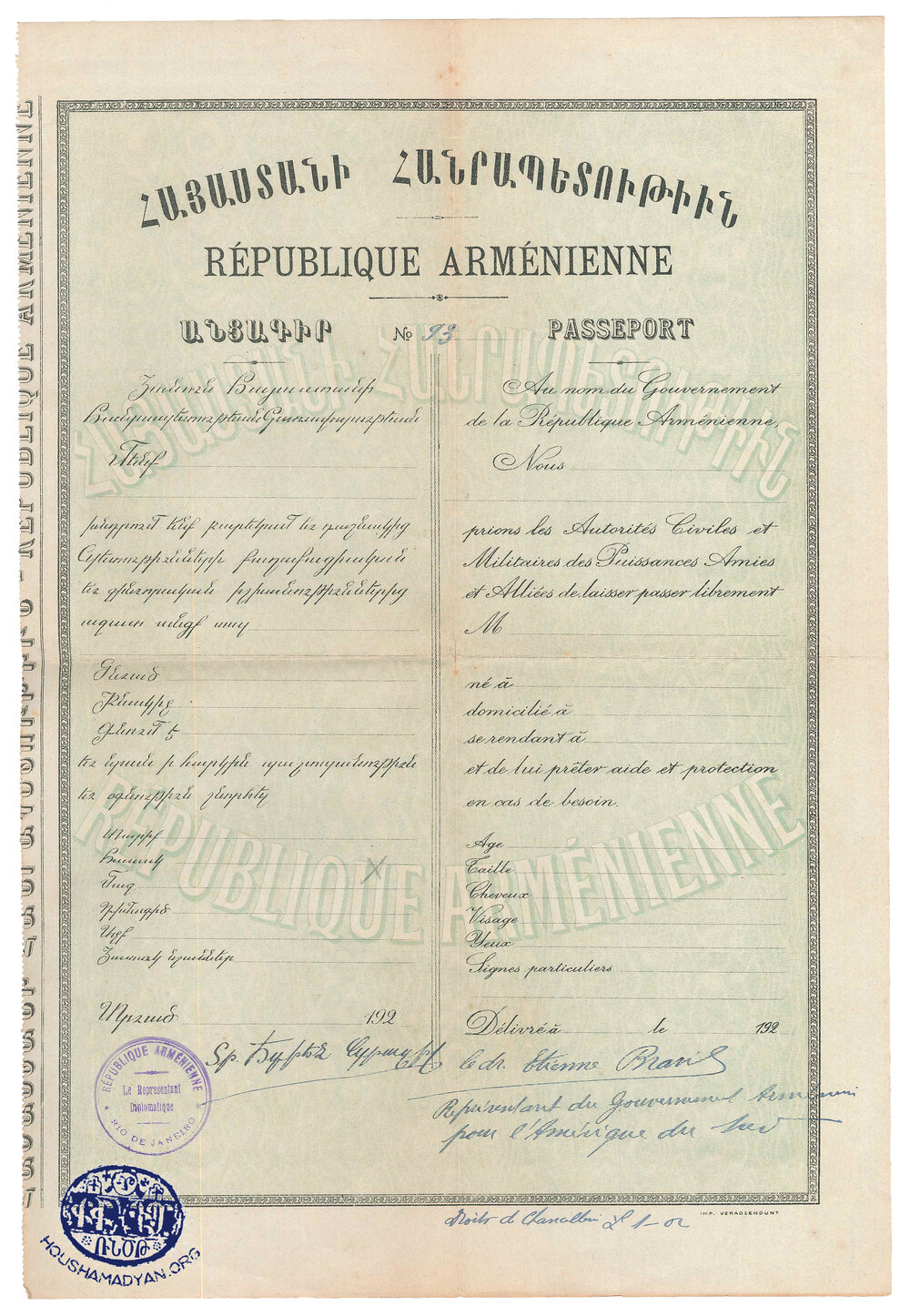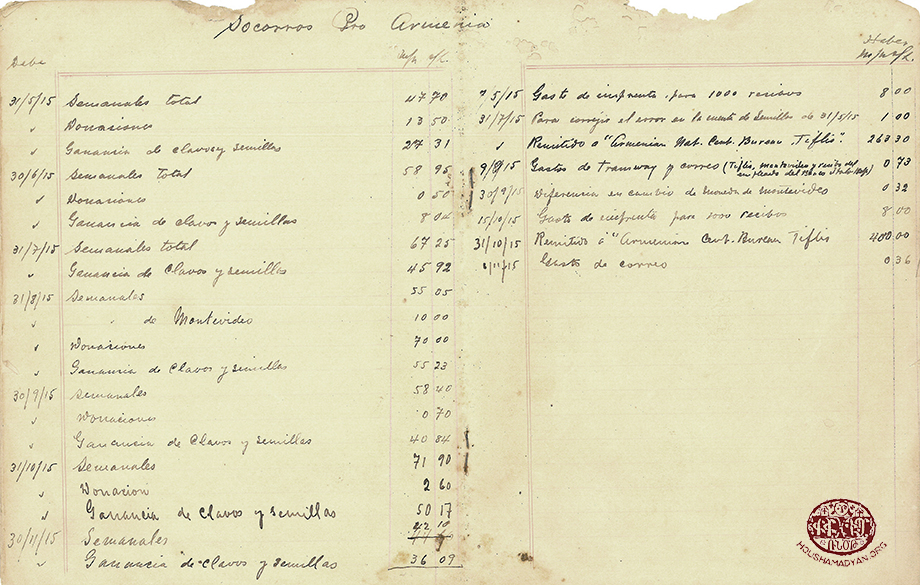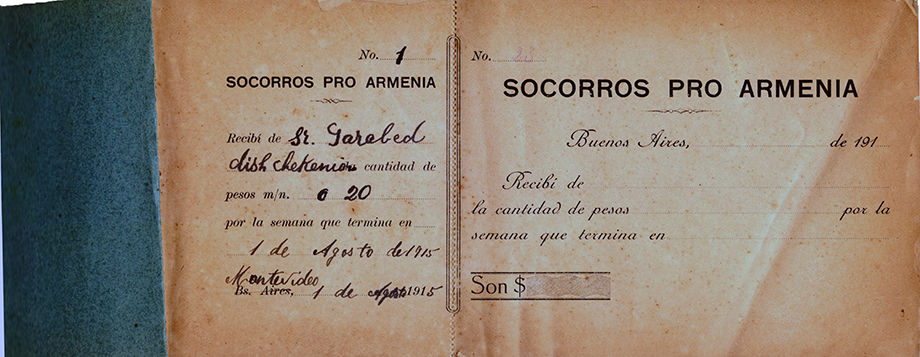Tagtachian collection - Argentina

This page is dedicated to the Tahtajian family (Tagtachian became the official name of the family once they settled in Argentina); here you will find displayed the archive that is currently in the possession of Juan Carlos Tagtachian in Buenos Aires, Argentina.
The Tahtajians originally hailed from Ayntab. Hagop Tahtajian, Juan Carlos Tagtachian’s paternal grandfather was born in Ayntab in 1884 and died in Buenos Aires in 1976. He had two brothers: Harutiun (Ayntab 1886 – 1934 Buenos Aires) and Ohannes (Ayntab 1900 – 1960 Córdoba), and three sisters: Annitza (Ayntab 1877 – 1952 Boston), Arousyag (Ayntab 1882 – 1964 Beirut), and Sira (Ayntab 1884 – 1985 Cleveland).
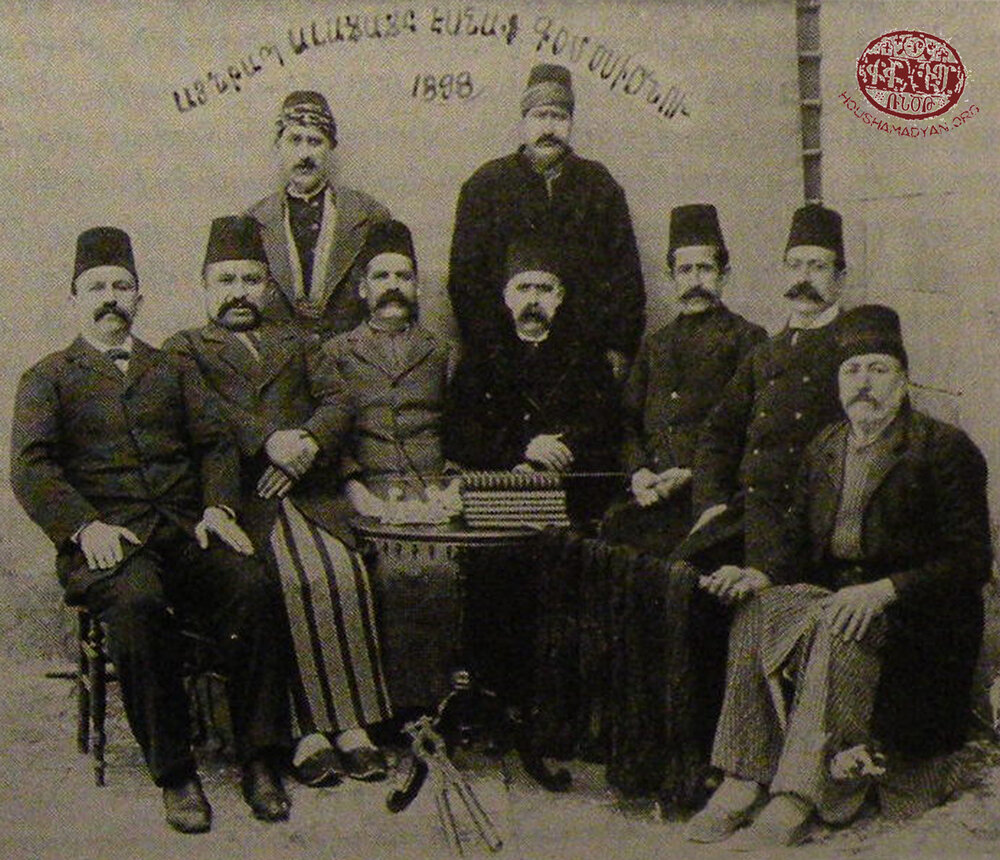
There were five branches of the Tahtajian family in Ayntab. Many of its female members were graduates of the Ayntab Armenian Hayganoushian school: Mennoush Tahtajian (1893 graduate); Arousyag Tahtajian (1899 graduate); Lousntak Tahtajian (1902 graduate); Satenig Tahtajian (1893 graduate); Hranoush Tahtajian (1908 graduate); L. Tahtajian (1909 graduate); Yeranig Tahtajian (1912 graduate); Ovsanna Tahtajian (1914 graduate).
Arousyag Tahtajian (later Araradian, born in 1894) was Hagop's (Juan Carlos' grandfather) sister. After her graduation from Hayganoushian school she became a teacher of history and geography in the same establishment from 1900 to 1911.
Among other Tahtajians from Ayntab, we know the name of Ardashes and Garabed, both of them well-known figures in the manusa (type of cloth) trade. Ardashes was a graduate from the local Vartanian school in 1888 and Garabed was a a member of the committee supervising the construction of the Ayntab Armenian Holy Mother of God Church in the 1870s and 1880s.
Hagop Tahtajian's father, Hanne Tahtajian (ca 1855 - ca 1905) was a lawyer and a local notable.
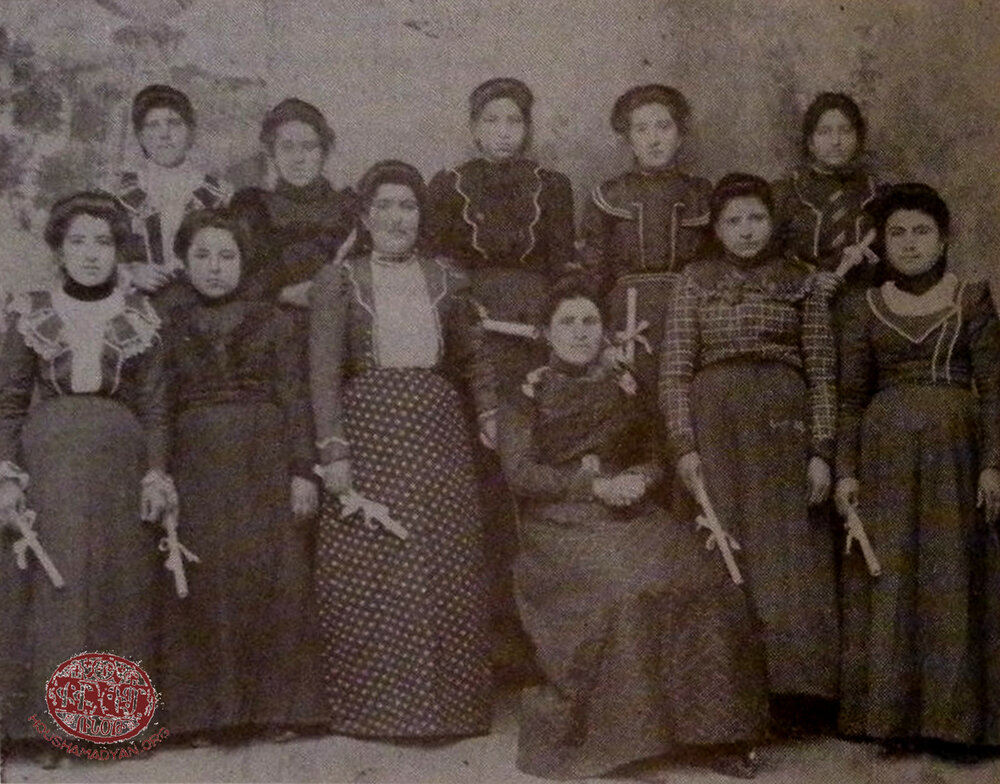
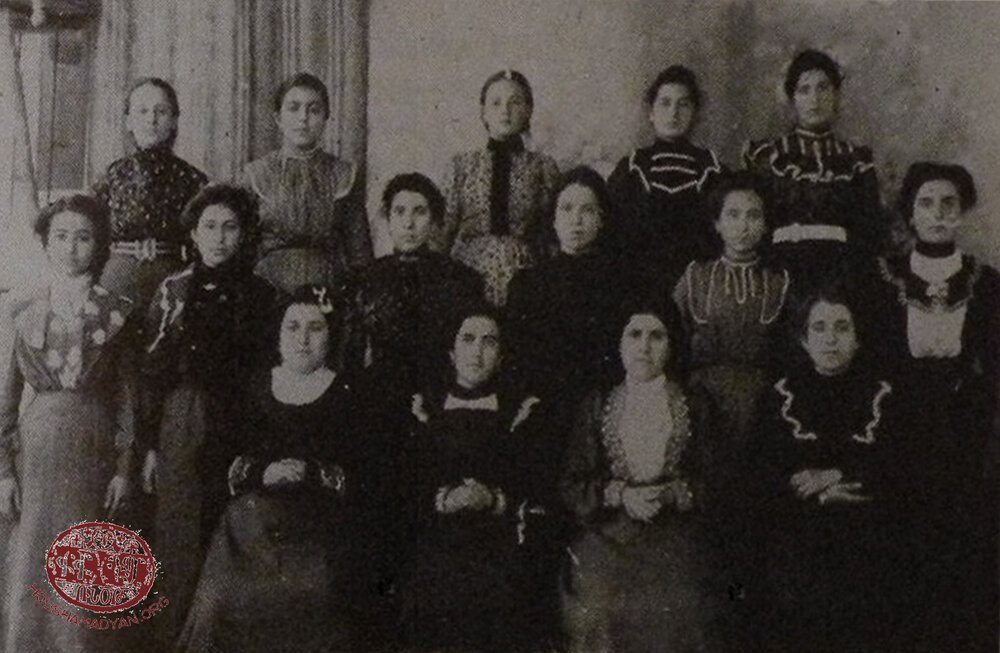
On January 24, 1910, Hagop Tahtajian/Tagtachian arrived in Buenos Aires after a 3-month stay in Montevideo and a stop-by in New York. His initial intention was to meet his aunt, Yegcha/Yeghsa Tagtachian (1864 Ayntab - 1945 Boston) and his older sister Annitza Tahtajian, who had emigrated to Boston around 1906, after having married a Mr. Bargudian, who would later change his surname to Norian in the US. The Norians had founded a commercial company that imported products from the Middle East - including carpets, shoes, pistachios, etc., mainly from Ayntab and its surrounding areas.
Because of possible health problems, the immigration authorities prohibited Hagop Tagtachian’s entry to the US, and other passengers from the steamer recommended him to emigrate to Argentina instead, which at that time was going through a period of great economic growth and had a very favorable immigration policy. Thus Hagop Tagtachian continued his journey to Argentina.
Hagop settled in Buenos Aires, on 600 Chile Street, in the neighborhood of Montserrat, where he began to work as a shoemaker. He said that he had learned the trade in his hometown from the craftsman Rupen Boskezenian [Boshgezenian]. In 1912, Hagop’s brother Harutiun arrived to Buenos Aires from the US in order to work side by side with his brother in the shoe-making business. Harutiun Tahtajian/Tagtachian born in 1886 was a graduate of the Nersesian school in Ayntab. Later, he had continued his studies and had graduated from the Central Turkey college (the missionary college of Ayntab) in 1908. He migrated to the US where he was studying pedagogy at the University of Harvard, however he had to abandon his studies due to health problems, and thus joined his brother in Argentina.
Their work went very well; Hagop knew the trade while Harutiun knew accounting and English. The brothers opened one of the first shoe factories of the Armenian community in Argentina.
The Tagtachians played a major role in the footwear industry in Argentina. It was Hagop Tagtachian who started the manufacturing of espadrilles, as such opening a new vista for other Armenian craftsmen working in the same field.
Thanks to the commercial and family contacts with the Norian Trading Company in America, which was founded by Hagop and Harutiun’s brother-in-law, the Tagtachians gained contacts in the U.S. especially with the Rubber Company and achieved another important step for the growth of entrepreneurship - the representation for the Argentine Republic of the Ketz and Champion brand shoes, a product highly valued at that time in the local market.
In 1921, Hagop and Harutiun’s younger brother, Ohannes arrived from Ayntab, passing through Paris. The future fiancés and later wives of the brothers who were based in Buenos Aires went with Ohannes from Paris to Argentina. Ohannes became the third partner in the family business.
The brothers’ shoe-making firm operated until 1929 at 500 Entre Ríos street. In the same year, the company acquired a lot and built a store at 565 Saavedra street, in the Once neighborhood, where in addition to selling and repairing footwear, there was a warehouse of soles that provided for other Armenian merchants working in the field and to the general public, even inside the country. The address of the warehouse also served as a postal address for the publication of the newspaper "Armenia", the organ of the Armenian Revolutionary Federation (ARF), during the first years after its publication in 1931. Harutiún was one of the founders of the newspaper. He died in 1934 at the age of 46.
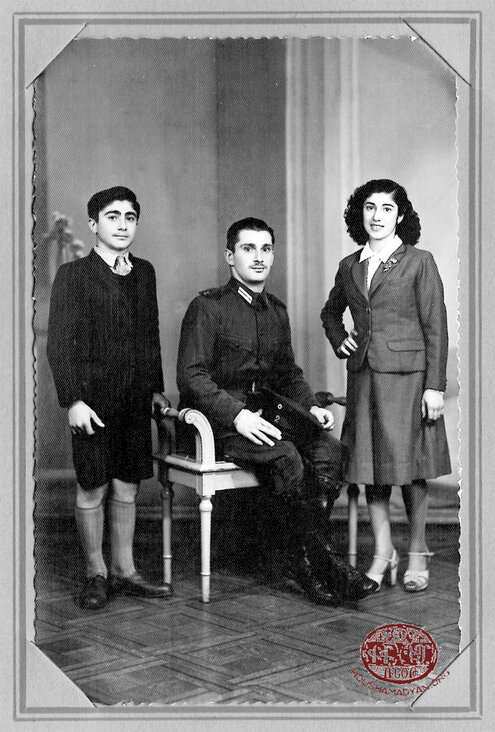
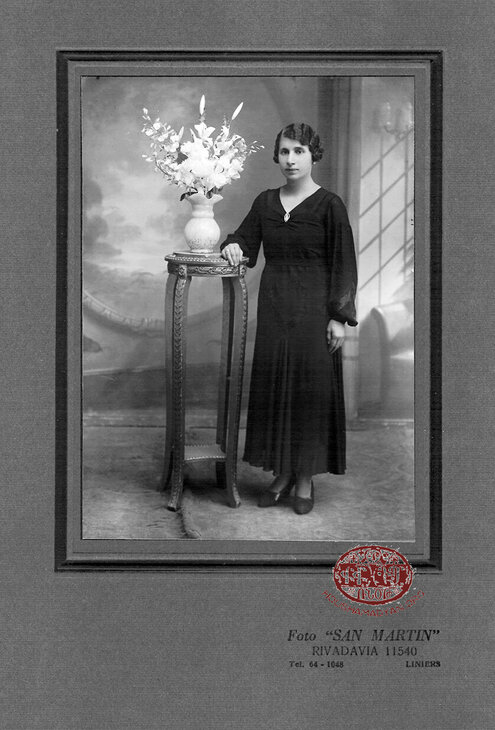
1. Hagop Taghtachian and Rosa Kalfayan's children, Melkon (1929-2004), Ardashes (1922-1981), and Ovsanna (1925-2006).
2. Rosa Kalfayan, Buenos Aires, 1921.
In 1930, Ohannes Tagtachian decided to settle near in the city of Cordoba. There, the company opened its first branch, in order to serve customers in the north of the country.
The unexpected death of Harutiun Tagtachian, in April 1934, who was the true brain behind the company, was a hard blow for his brothers. Over time, Hagop’s children: Ardashes (1922-1981) and Melkon (1929-2004) joined the company, which continued to operate until 1981.
Descendants of the Tagtachian family continue to live in Buenos Aires, Argentina.

Documents
These two documents concern the establishment and the first announcements of the Armenian National Union in Buenos Aires.
Starting the last months of WWI, unions bearing the same name started forming in the regions of the Ottoman Empire that were occupied by the Allied armies, as well as in different communities of the diaspora. These unions gathered different Armenian political parties and community organizations.
The first document dated 6 October 1918, is a public call from the Armenian National Union of Buenos Aires. It says that the war has ended and that the Armenians need to mobilize their power in order to face new challenges. Those who wish to register as volunteers are advised to address the union.
The second document dated 8 October 1918 and written by Harutiun Tahtajian, officially announces the establishment of the Armenian National Union of Buenos Aires. The administration staff includes: Y. Khatchigian, M. Ebeian, K. Solgarian, M. Movsesian, N. Khoulmounian, R. Nalbantian. The union has also created a propaganda committee with the following members: Kh. Arslanian, J. Diksanian, H. Mosgofian, A. Keoshgerian, B. Hovagimian, P. Nalchajian, H. Kyatibian, M. Medzadourian, H. Tahtajian, H. Nersesian.
Due to their reputation among Armenian immigrants, the brothers became the civil representatives of Mr. Etienne Brazil, the representative of the Republic of Armenia for South America, who was based in Rio de Janeiro, Brazil. The brothers were commissioned to provide Republic of Armenia's official unfilled passports for the undocumented Armenian refugees who arrived to Buenos Aires since 1919.
